How to choose the perfect southern Spain road trip? There are so many; Cadiz to Malaga via Gibraltar or a tour of the White Villages of Andalucia and beyond. Then, of course, there are the three gems: Sevilla, Cordoba and Granada nestled close to each other on an Andalucian itinerary
It’s difficult to choose amongst these embarrassments of riches along one of Spain’s most interesting areas.
We choose to travel along the Mediterranean coast from Malaga along the Costa Blanca and Costa del Sol to the cosmopolitan city of Valencia.
This road trip offers a wide variety of attractions Spain is famous for: excellent local wines, ancient ruins, medieval cities, world-class museums, local festivals and, of course, Spain’s inimitable foodie scene.
Table of Contents
ToggleMadrid
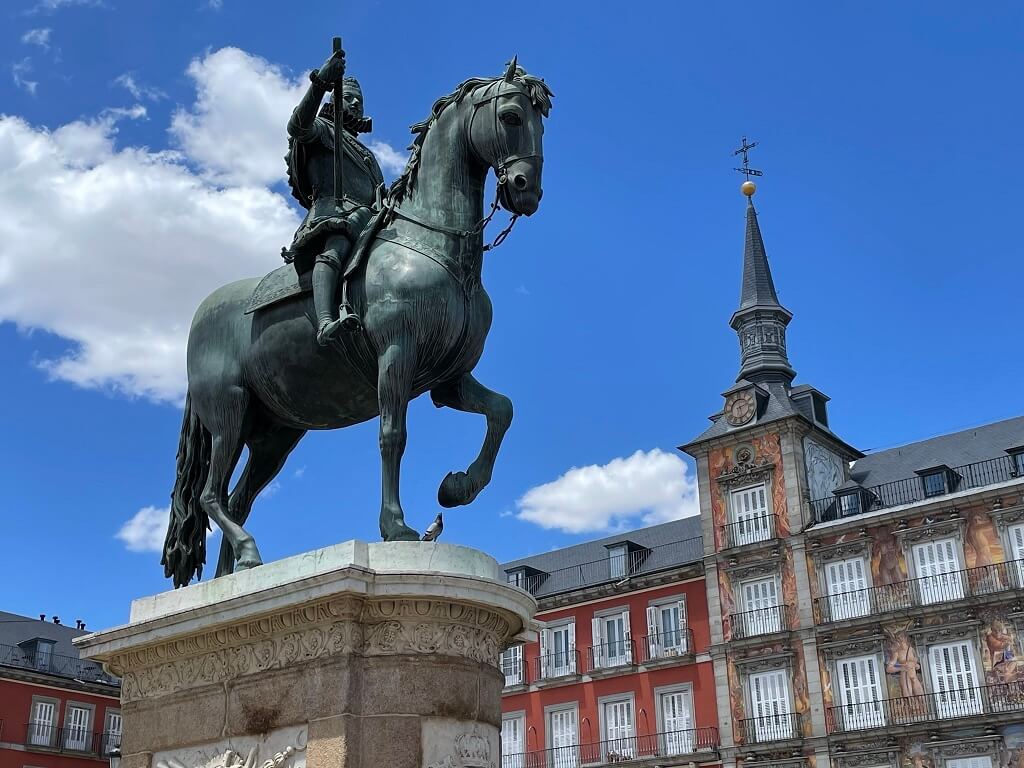
To start the southern Spain itinerary, we entered Spain through Madrid, the nation’s capital, then headed south into deepest southern Spain. Along with other great Spanish cities like Barcelona and Valencia, Madrid never disappoints.
If you are flying into Spain, Madrid is a great start to any Spanish road trip. The Spaniards have a saying, “From Madrid to heaven.” Spend some time in this historic and cosmopolitan city and you’ll know what they mean.
Madrid is famous for its world-renown attractions like the cultural trifecta consisting of the Prado Museum with one of the largest art collections in the world specializing in the Spanish masters like Velasquez, Goya and El Greco (who was actually Greek), the Thyssen-Bornemisza displaying collections from the 13th to late 20th centuries, and the Museo Nacional Centro de Arte Reina Sofia, “The Reina Sofia” for short, a mecca for contemporary and modern art.
Besides world-class museums, Madrid offers the culture vulture unique, specialty museums like the Monasterio de las Descalzas Reales, a monastery in the center of Madrid dating from the 16th century. Today it is a museum well worth a visit. They have a beautiful art collection and the building itself is a work of art.
Frequently overlooked, the Sorolla Museum displays a collection by Spanish artist Joaquin Sorolla and his relatives in a charming mansion once home to the artist.
The Museo de Las Americas details the history of the Americas from the perspective of the people who first colonized it.
To get a good feel for Madrid, a visitor needs to go beyond the main avenues and tourist magnets to explore the less frequented, quirky neighborhoods like Chueca.
This once seedy-now trendy neighborhood is packed with all types of clubs and music venues, many catering to the gay community.
Another must-visit neighborhood is Lavapies with its eclectic collection of ethnic restaurants.
Spaniards are born foodies. They really savor their meals. The food culture in Madrid is palpable and the area boasts one of Spain’s most important regional cuisines.
I highly recommend El Sobrino de Botin, founded in 1725. It is said to be the oldest continuously functioning restaurant in the world, a major tourist draw and a favorite of Ernest Hemingway.
If you want to experience the Spanish tapas culture, make your way to neighborhood tapas bars that specialize in the tasty Spanish tidbits.
One such gem close to the Prado Museum is Cerveceria Cervantes. This is one of the best tapas restaurants in Madrid and I always try to make time to go there.
For the ultimate in relaxation despite being in the middle of a busy metropolis, go to Madrid’s version of Central Park, the Parque El Retiro.
This peaceful pleasure garden has almost 300 acres of wild and landscaped vegetation, several rose gardens, sparkling lakes and a magical crystal palace. All this, nestled among exotic flora from around the world and a reflecting pool. Truly a magical place.
For a perfect day in Madrid, visit one of the museums on the periphery of Parque El Retiro, wander across the park and exit in one of the posh neighborhoods on the park’s outskirts like Ibiza.
There you find Ibiza Street which has come to be recognized as the new gastronomic center of Madrid. The street is lined with dozens of restaurants, each one as good as the next. Bon Appétit!
WHATS NEARBY. If you are taking this route from Madrid to Ronda, and you have time, make sure to stop at Cordova, a UNESCO World Heritage Center. Cordoba is 4 hours south of Madrid and 2 hours north of Ronda so, it’s on the way and worth a stop. The city boasts an eclectic mix of Roman, Moorish and Spanish culture. Highlights include Mezquita-Catedral dating to 784 CE, the iconic Roman Bridge and many museums.
Entering southern Spain: The official start of the southern Spain road trip
Ronda
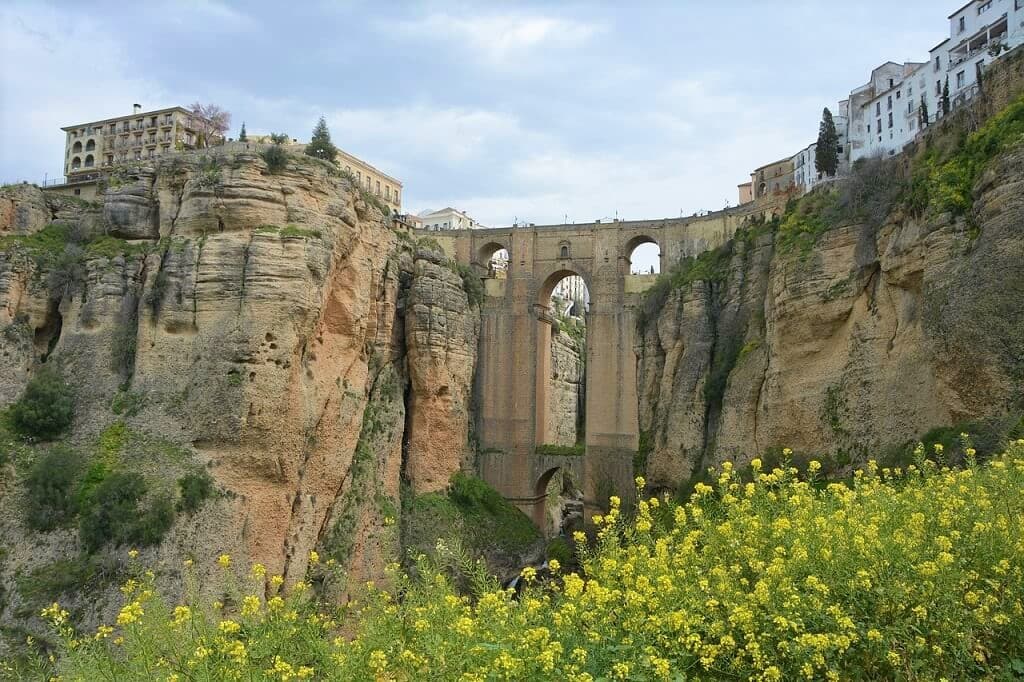
You won’t need a car while in Madrid as it is an eminently walkable city. When you’re ready to head south on your southern Spain itinerary, get your rental car and take A-4 south. Ronda lies about 550 kilometers south of Madrid. Depending on your stops, the trip takes about 6 hours.
Ronda is among the most interesting places to stop on the way to a south Spain road trip and the third most visited city in southern Spain.
The city lies on a mountaintop dramatically straddling the 328-foot Tajo River gorge.
The iconic Puente Nuevo unites the new part of the city which dates from the 1400s to its older section which dates to the Moorish conquest from about 700 CE to the late 15th century. It feels weird referring to a part of Ronda as “new” when it is actually over 7 centuries old.
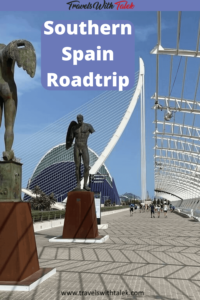
The impressive Puente Nuevo was completed in 1793 to improve on two existing bridges the Puente Viejo and Puente Romano.
There are a couple of trails you can follow to hike down to the bottom of the gorge. Look up and see the Puente Nuevo from a different yet equally impressive perspective.
If you want to test your mettle, stand on one of the precipitously perched balconies overlooking the gorge and look down. These are called “coño” balconies because when you look down, you’ll want to exclaim “coño!,” a very rude word in Spanish loosely translated as “damn!” only worse.
The city has one of Spain’s most beautiful bullrings and is steeped in the bullfighting culture.
Other can’t miss attractions include the Moorish architecture of Old Town including the Arab baths. These baths date from the 10th and 11th centuries and, although now abandoned, look much like they did almost 1000 years ago.
The best place to stay in Ronda is the Parador de Ronda, part of the Parador group of hotels. These are former monasteries, hospitals, abbeys, etc. that have been converted into luxury, historical hotels.
It may be a bit pricy but worth it for the experience. If you want a more budget-friendly hotel with a killer view of the Puente Nuevo, try the Hotel Don Miguel. Note that there is an extra charge to have a bridge view.
Booking.comMalaga
Malaga is a glorious port city on Spain’s Costa del Sol (Sun Coast) and a can’t miss town on any south Spain road trip. Wandering around Malaga is like strolling through history.
Remnants of Malaga’s historical past are everywhere; the Roman amphitheater, the Moorish Alcazaba, the Renaissance cathedral.
Dating from the 3rd century, Malaga’s Roman theater is the oldest structure in town. One of the best-preserved Roman structures in Spain, it lies in the center of town at the foot of the Alcazaba fortress, so you can visit both attractions at the same time.
As impressive as the Roman theater is, the Moorish Alcazaba outshines it.
The Alcazaba is a massive castle, a defensive fortification, built during the golden age of the Moorish occupation of Spain in the 11th century with substantial additions in subsequent centuries.
It sits on top of the tallest mountain in Malaga providing sweeping views of the harbor and the city below.
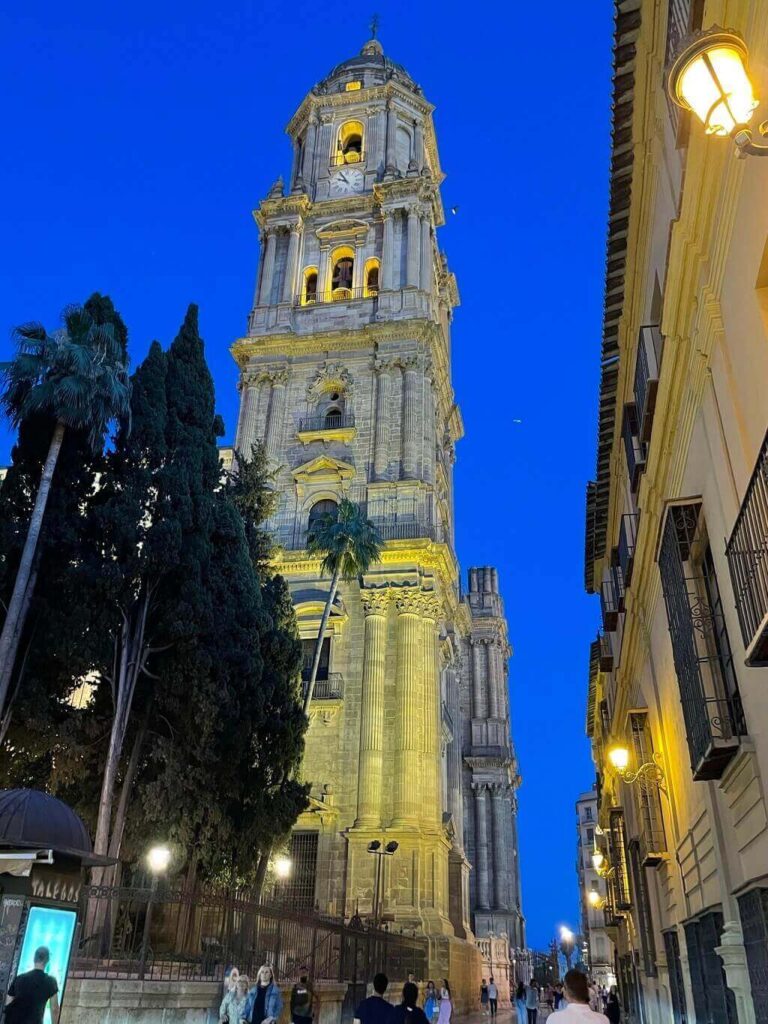
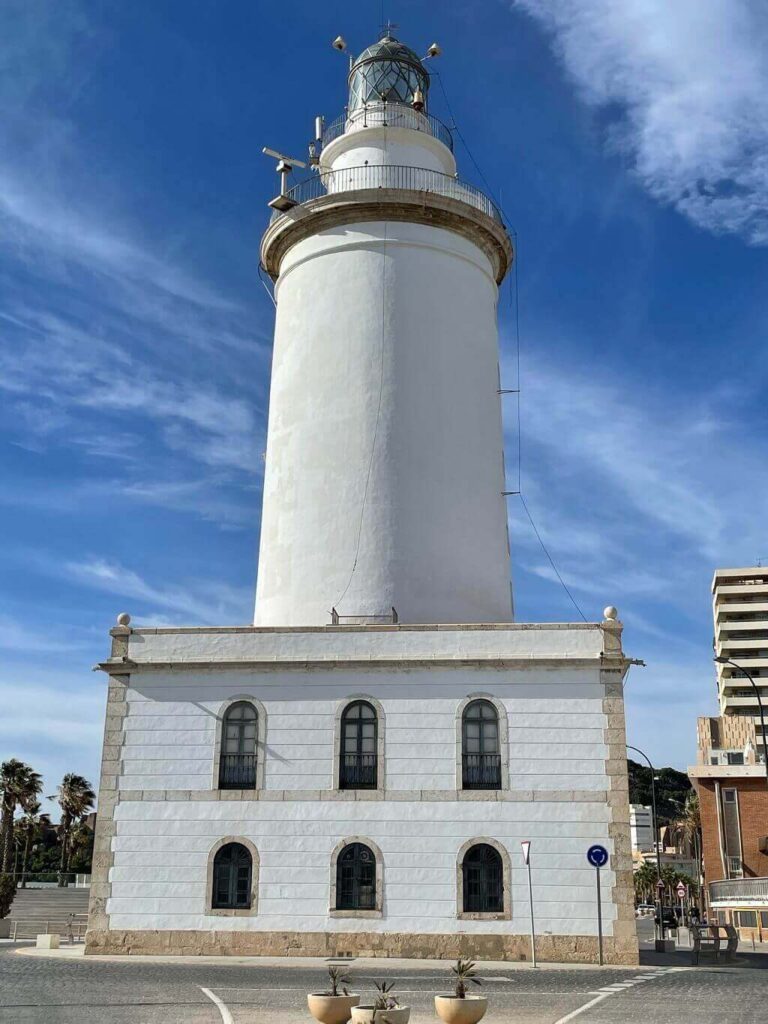
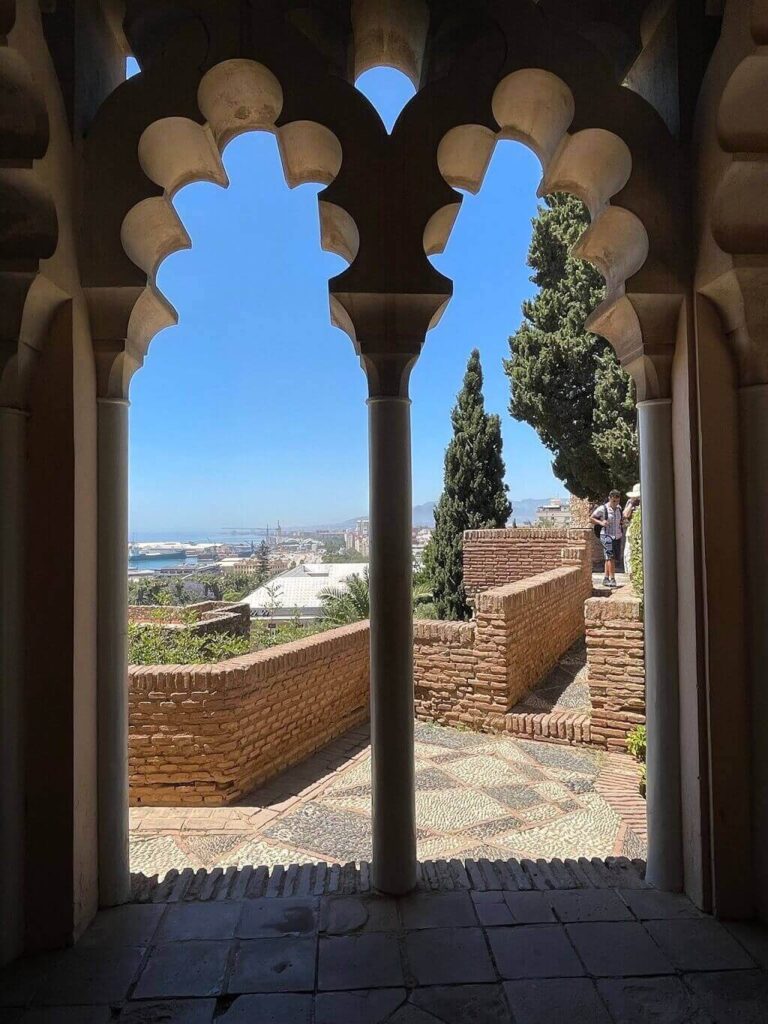
What is most notable about the Alcazaba is the architecture and engineering expertise it took to build during that time period. How the heck did they get those massive stones up that mountain in the 1100s!
Also impressive is the sheer artistic achievement; the landscaped gardens, arched doorways opening to ocean views, winding paths leading to little courtyards with gurgling fountains.
The people who built this were as concerned about aesthetics as they were about military fortifications. You can walk to the Alcazaba or take a little bus which is included in the price of your ticket.
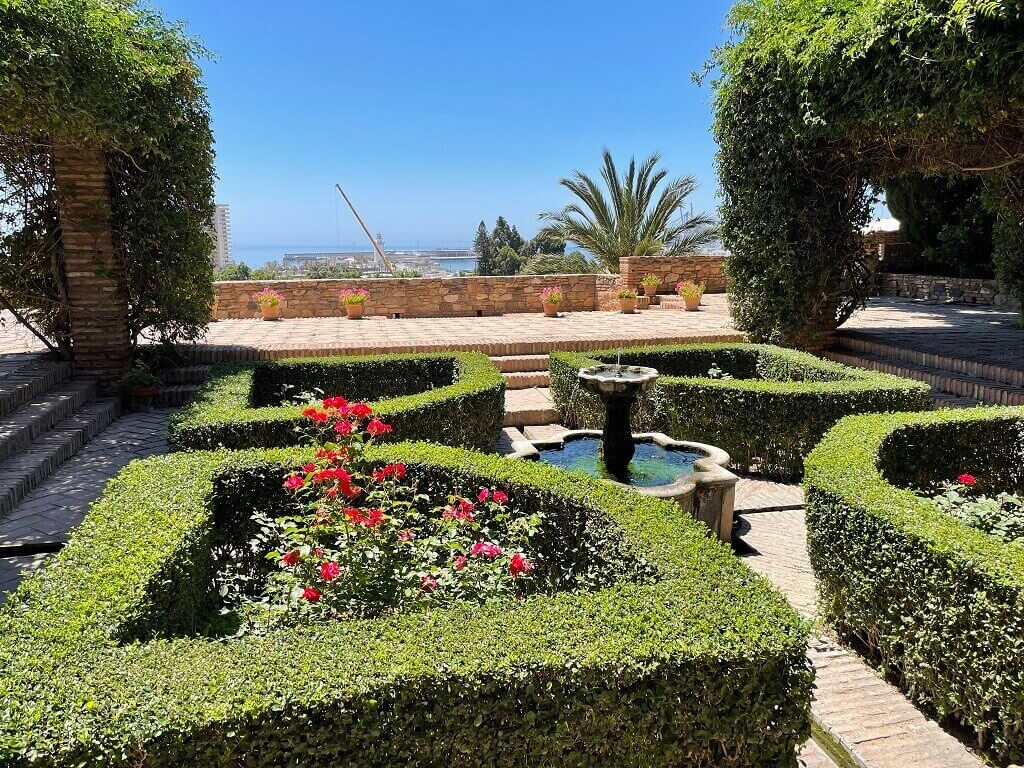
Walk a little deeper into the old part of town towards the cathedral and immerse yourself in Renaissance Spain.
Malaga’s cathedral, officially known as the Santa Iglesia Catedral Basilica de la Encarnacion, was built over a 200-year time span from the 1500s to the late 1700s. The style is Renaissance with a good chunk of Baroque thrown in.
As the cathedral is set in a small plaza, it appears massive and brooding. Don’t miss it. It’s not “just another church.”
Other lovely attractions in Malaga include the hometown-boy-done-good Pablo Picasso Museum and a branch of Madrid’s Thyssen-Bornemisza museum. And make sure to stroll on the port. Choose from the many seaside restaurants and peruse the artisanal stalls.
At night Malaga really shines. As the city is a major tourist town, the narrow streets and plazas are brimming with restaurants, tapas bars and live entertainment venues. I don’t think I’ve ever seen such crowded streets. You are likely to have to wait for a table.
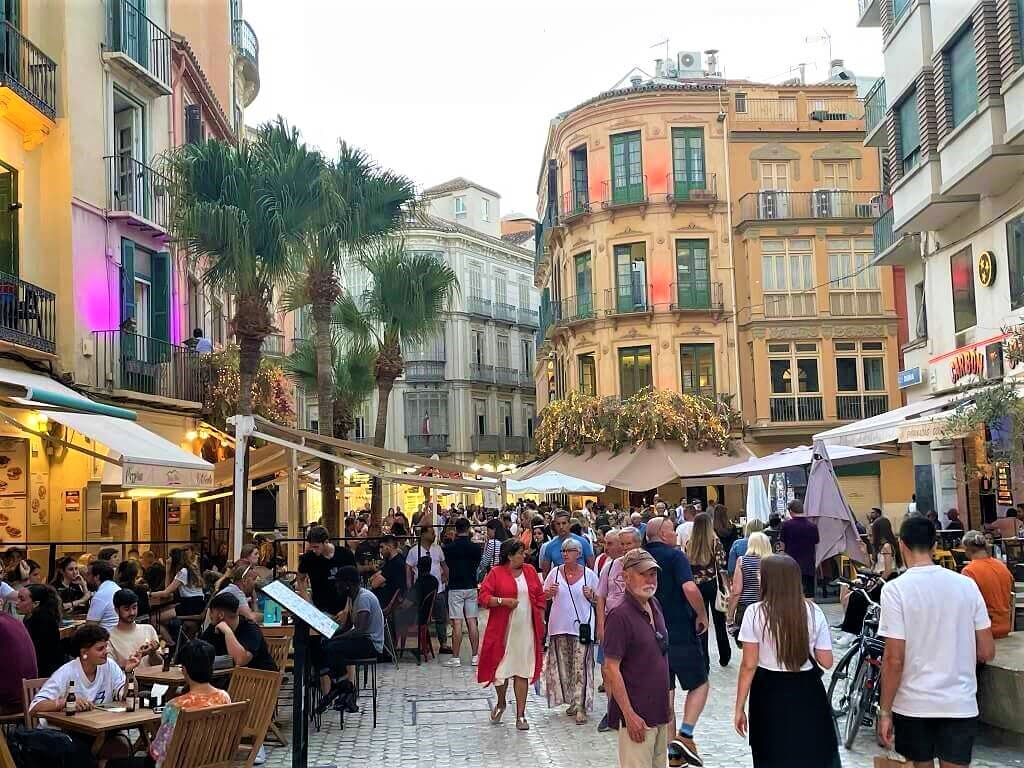

Nerja
Continue east along the Costa del Sol on your southern Spain road trip and in less than one hour you’ll come to the picturesque resort town of Nerja.
Nerja is famous for being Europe’s Balcony. Legend has it King Alfonso XII of Spain visited the area after a devastating earthquake. He was so mesmerized by the beautiful view of the ocean from a promontory that he declared it to be “Europe’s Balcony.”
Today you can stand where the king stood and enjoy the same view while you have a snack or beverage at any of the little cafes that dot the “balcony.”
Head to Nerja’s pretty main square with its whitewashed houses and palm-fringed streets and watch the world go by.
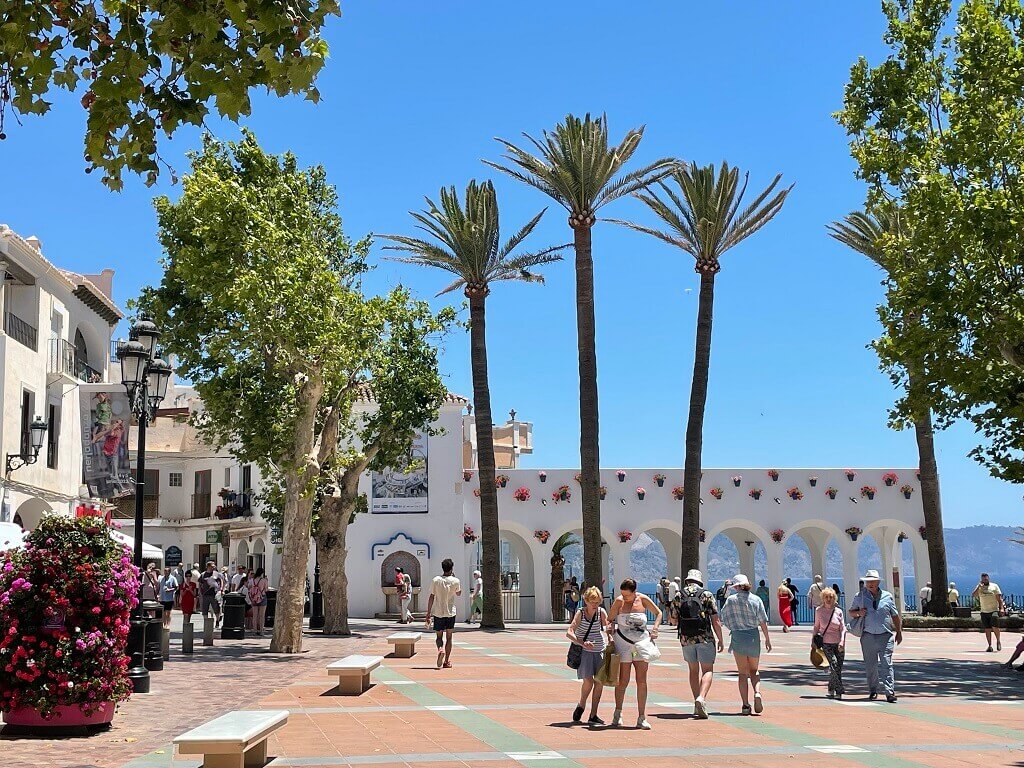
Don’t miss Nerja’s number one attraction, the Nerja Caves. This network of caverns was created over 5 million years ago and extends for over 5 kilometers.
Get the audio guide and, tacky as it may seem, get your photo taken with a cave background. You only pay for the photo if you like it, and it makes for a unique souvenir.
WHATS NEARBY. About an hour north of Nerja is the glorious city of Granada. Here you will find the historic and magnificent Alhambra, the palace and summer retreat of the Muslim rulers. Built during the 1200 and 1300s, the structure is one of the most beautiful in Spain. After the Reconquest in 1492, the Alhambra became the royal court of the Spanish Monarchs Isabela and Ferdinand. One of the main rooms is said to be the location where Columbus and Queen Isabela negotiated the financing for Columbus’ exploration.
Cartagena
Cartagena is rich in history which dates back to its founding by the Carthaginians in 220 BCE. Today it is a multi-ethnic metropolis with Muslims, Spaniards and the occasion northern European pensioner coexisting side-by-side among the cafes, beaches and tapas bars.
The city was always a major port but during the Roman period Cartagena flourished as an important cultural and commercial center. That’s one of the reasons why the city is awash in well-preserved Roman ruins.
First among the impressive Roman ruins is the 1st century amphitheater. Also noteworthy is the Casa de la Fortuna, a Roman Villa that housed the city’s wealthy and powerful. You can still see paintings and a good selection of those beautiful Roman mosaics at the villa.
If you happen to be into Roman mosaics, like I am, this villa is worth your time. It’s not as impressive as the Villa Romana del Casale in central Sicily, but it is still interesting to imagine how Roman royalty lived in the richest period.
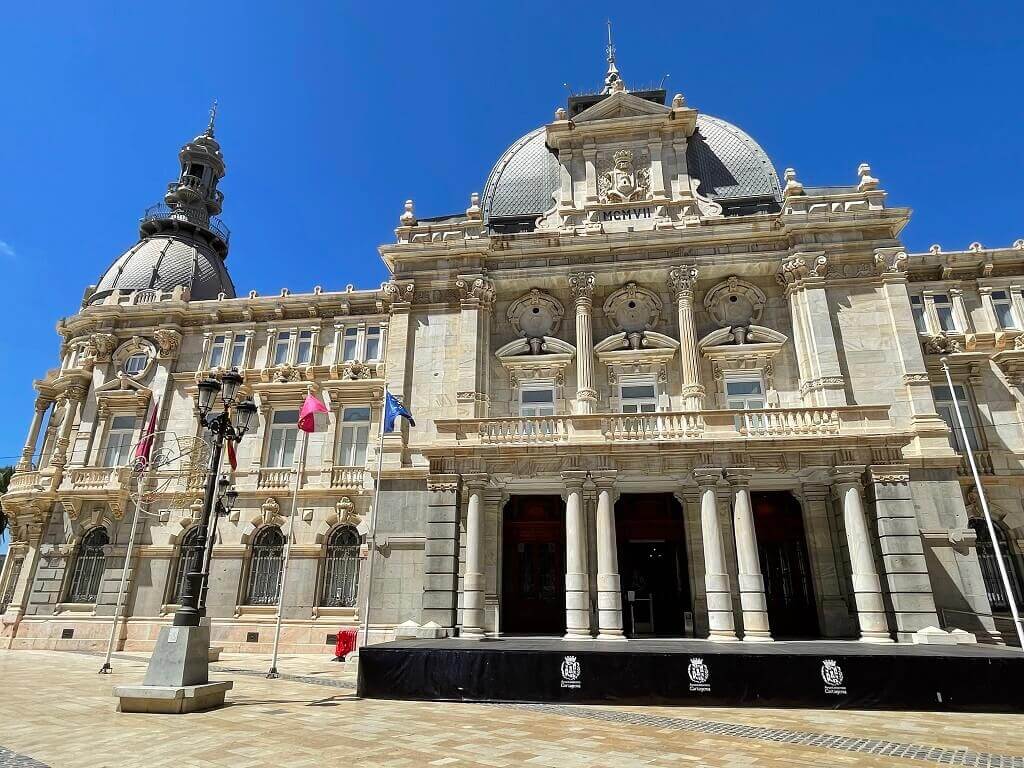
Cartagena is also a museum goers dream. Some of the best include: ARQVA Marine Archeology Museum, the Municipal Archeology Museum, the very moving Museum of the Spanish Civil War and, true to its origin and heritage as an important port city, the Naval Museum.
But Cartagena is more than just interesting museums and impressive ruins. At night the city lights up with trendy tapas bars, sidewalk restaurants and music venues.
Find your way to Calle Mayor, the main drag. Pick an inviting restaurant from the many that line both sides of the streets and settle in to dine on fresh seafood, refreshing sangria and a big dose of people watching.
Alicante
Ah, Alicante. You never know what pleasant surprises you will encounter on a road trip in southern Spain. Alicante was one such surprise.
First, we found an amazing hotel basically by closing our eyes, pointing to one on the map and hoping for the best. The Odyssey Rooms turned out to be the best hotel experience we had on our south Spain road trip.
It’s brand-new studio apartments, centrally located, full breakfast included, with a balcony and a pool on the roof. What a find!
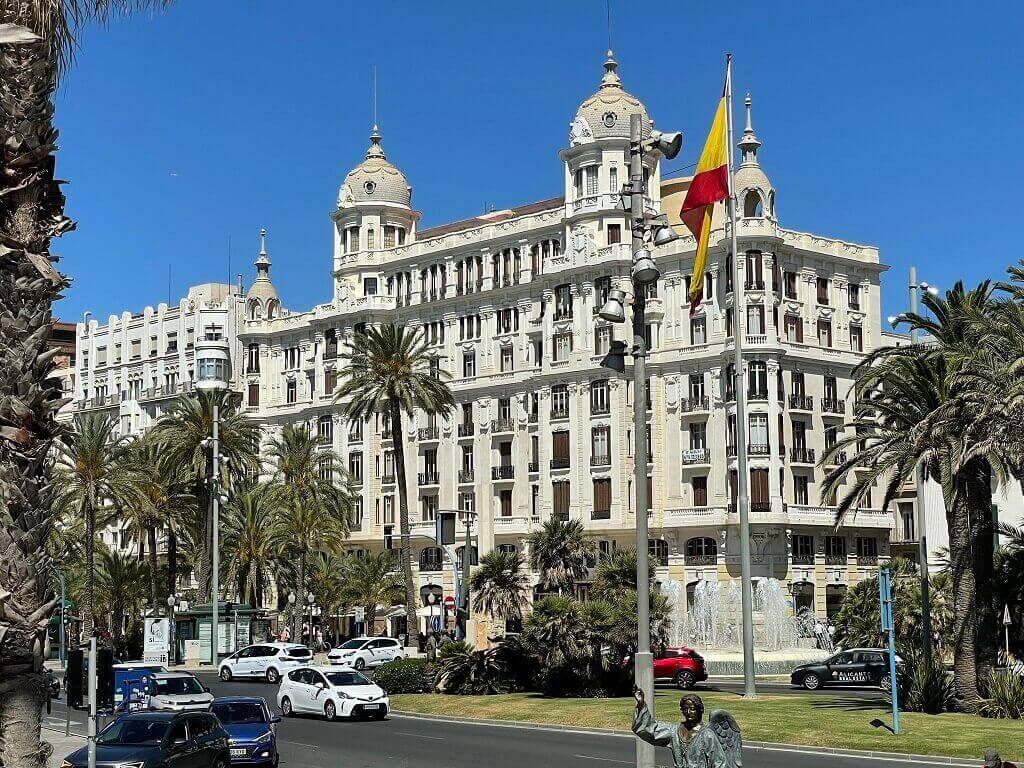
Next, we took the hop-on-hop-off bus, which I always recommend, and really got to know the city.
The bus led us to one of the best archeological museums I’ve ever visited. The Museo Arqueológico de Alicante displays collections from Alicante’s history. The area has been inhabited for over 7000 years.
Although conquered by the Carthaginians, the city boomed during Roman times and the bulk of the collections is from that Roman period. There was a special exhibit on Roman Gladiators when we visited.
What’s most impressive about this museum is that the exhibits are multimedia and interactive. You feel like you are in the arena with the gladiators with the roar of the bloodthirsty crown surrounding you.
A landscape display changes over the centuries as you watch it go from prehistoric times to the modern age. The exhibits really draw you in creating an immersive museum experience. Well done, Alicante!
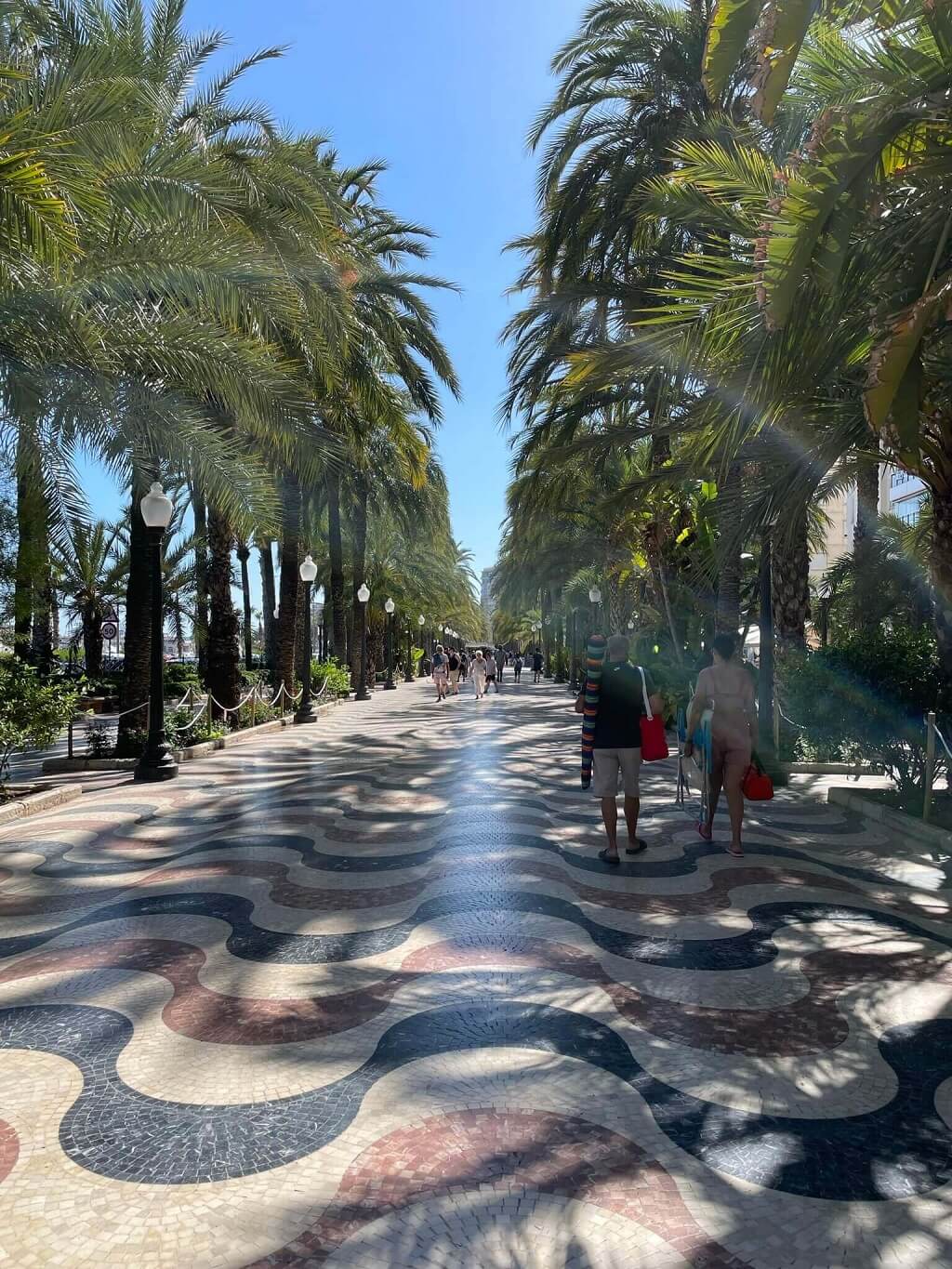
Like any self-respecting southern Spain town, Alicante also has a Moorish castle on a mountain top. It is the Castillo de Santa Barbara, a 9th century Muslim defensive structure with a museum, guided tours and killer views of the city below.
Definitely visit this fortress and get your daily dose of exercise walking around its parapets and lookout towers.
Alicante’s main boulevard is wide, lined with sidewalk cafes and palm trees. It must be one of the prettiest pedestrian boulevards in Spain.
The city has quirky neighborhoods with surprisingly good restaurants in unexpected places like a back street or a hidden square. We quickly learned not to judge a restaurant’s potential quality by its location. Some of our best meals were in out-of-the-way little alleys and semi-hidden coves under stairs.
Much to my surprise, Alicante has been quietly making a name for itself in the culinary space with amazing restaurants like those in the Grupogastronou, a collection of fine restaurants worth trying.
As if all of this were not sufficient justification to love Alicante, we coincidentally visited during one of the town’s festivals where the locals inexplicably disguise themselves as pretty much anything they want and join parades through the city.
I love this sort of thing and happily joined the fun.

Make sure to make Alicante a top destination on your southern Spain road trip.
Make sure to stay at the Odyssey Rooms in Alicante
Denia
This picturesque little town of about 40,000 inhabitants has endured a parade of conquerors over the millennia.
Inhabited since prehistoric times, Denia was a Greek colony in the 4th century BCE, part of a Visigoth Kingdom in the 7th century CE, a Muslim Caliphate reconquered by the Christians in 1244, invaded by the French then reconquered once again by the Spaniards.
Today, the city’s bucolic, palm-fringed streets and sunny, sleepy plazas belie Denia’s turbulent past.
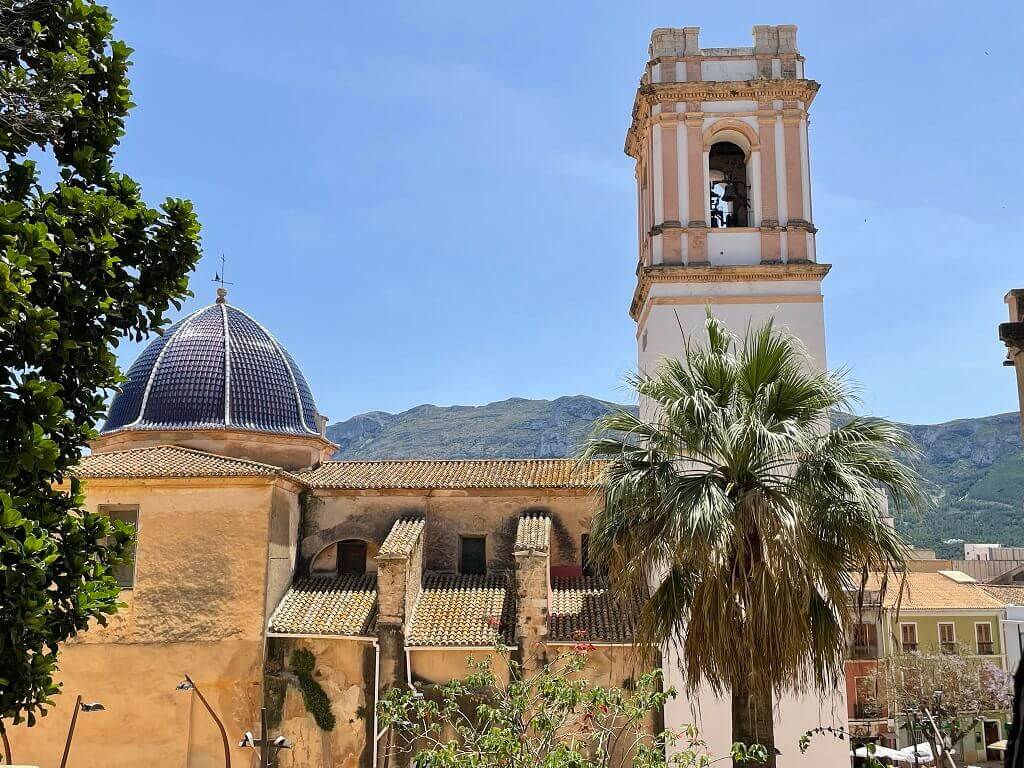
People come to Denia to relax and chill on the beach during the day and enjoy a leisurely meal in the evenings. No need to rush here.
Denia’s main sights include the Denia Castle, a Moorish structure from the 11th and 12th century overlooking the Mediterranean Sea.
There is also a little museum displaying artifacts from various periods and detailing the culture of the city and its people.
The beach has a string of restaurants for all tastes and budgets and makes for a nice stop on your southern Spain road trip.
Valencia
Last stop on your south Spain road trip!
First thoughts on Valencia, Spain’s third main city after Madrid and Barcelona, is that it is severely underrated. It is not as bustling and busy as Madrid and has the weather and laid-back attitude of Barcelona but without the Barcelona prices. Overall, adding Valencia to your southern Spain road trip is an excellent move.
Valencia is two cities; the old and the new.
The city’s Old Town dates back to the first century BCE when it was founded by the Romans and grew to be one of the most important trading areas. It was a major caliphate under Moorish rule and a flourishing port during the Middle Ages.
All these eras are beautifully represented in Valencia’s architecture and in its museums.
Top can’t miss sights in Valencia’s Old Town include:
- Cathedral of Valencia. The original holy chalice, important to Christians, is said to be housed there.
- Plaza de La Reina, the main square
- Mercado Central. It closes at 3:30 PM so make sure to get there early as there is lots to see.
- The Silk Exchange. Get the free audio tour and listen to it carefully. The details will amaze you.
- Plaza del Ayuntamiento or City Hall. Get all your tourist needs and info here. They also have a clean bathroom.
Valencia Museums are well worth your time even if you are not a museum buff. There is something there for every taste. Just a brief sampling includes:
- Museo Histórico de Valencia (Valencia History Museum)
- Museo Fallero. Museum of figurines that are burned in a bonfire every year to signify nature’s rebirth. Some are worth thousands of euros!
- Museo de Bellas Artes (Museum of Fine Arts)
- Museo Militar (Military Museum)
The Museo Nacional de Ceramica y Artes Decorativos (Museum of Ceramics and Decorative Arts) was by far my favorite.
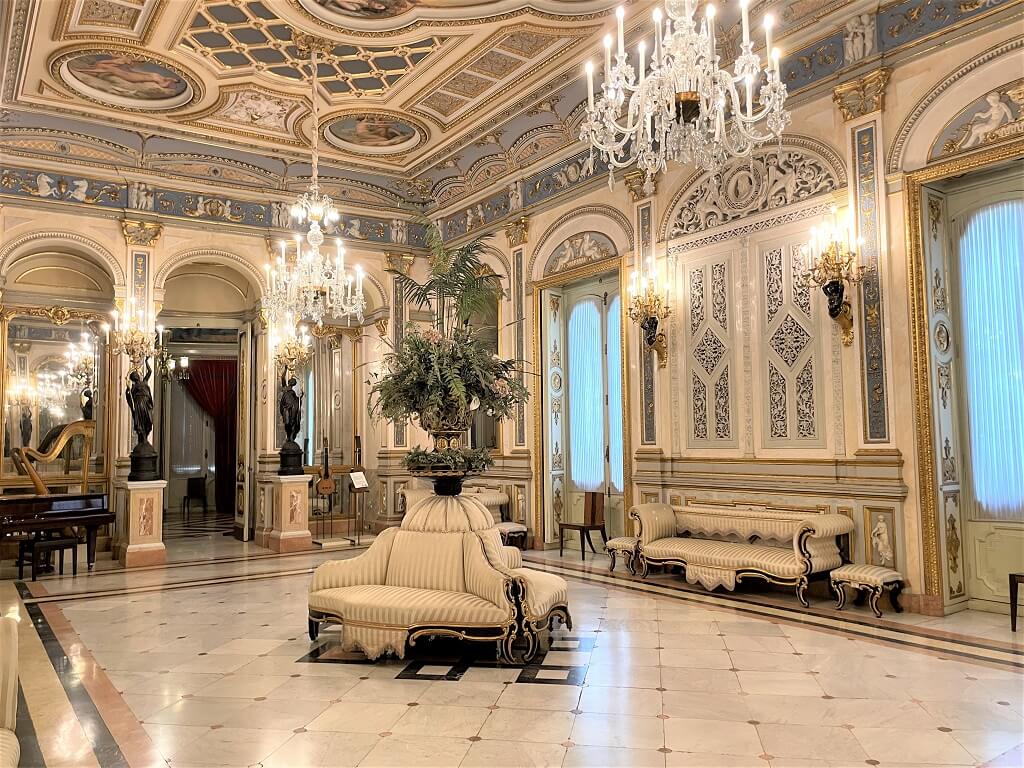
This is the former palatial home of the Marquis de Dos Aguas. And what a home it is! Don’t be fooled by the museum’s name. It is much more than a collection of ceramics. Room after room of sumptuous decorations are on display in this amazing little palace.
If you’ve ever wanted to see how the obscenely wealthy lived in European splendor in the 19th century, this is it!
But wait, there’s more! Remember I said Valencia was two cities the old and the new? Well, the new is the spectacular City of Arts and Sciences.
Valencia’s City of Arts and Sciences is a collection of futuristic buildings housing art and science museums, the biggest aquarium in Europe, an IMAX Theater, a performance center for ballet, opera and plays, a convention center and much, much more.
Even if you have zero interest in the arts and sciences, you will be mesmerized by the architectural structures most of which were created by renown architect, Santiago Calatrava.
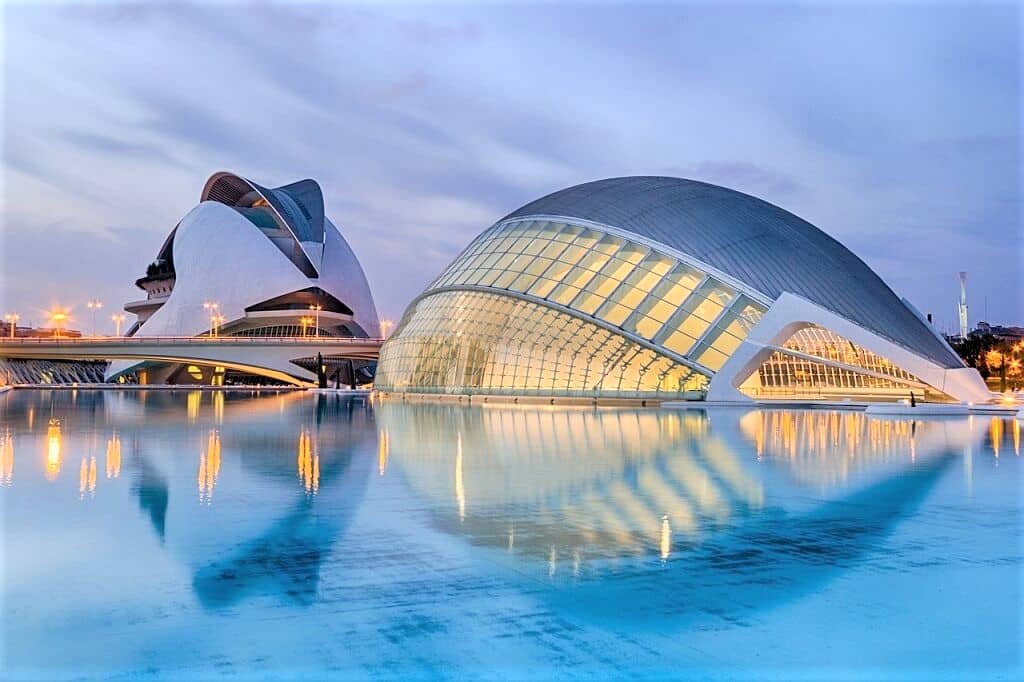
Spend a day wandering the venues, snacking in the cafes and perhaps have dinner at the unique underwater restaurant, Restaurante Submarino. Don’t forget you’ll need reservations.
Want to learn more about Southern Spain? Get these reference books:
What are you thoughts on this southern Spain road trip along the Mediterranean?
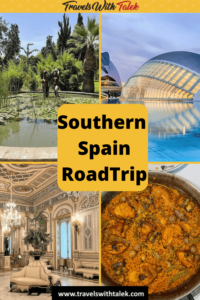
BTW, if you are getting ready for your trip, make sure to take advantage of these useful, money-saving links to book your trip:
- Research and book your flight with Skyscanner. I have found them to be the best because they list all airlines including the budget ones. You are always sure of having researched all options.
- For car rental around the world, Discover Cars has flexible pickup and drop-off options, I recommend Discover Cars.
- Book your accommodation with Booking.com. I find they have a wide selection and a nice, user-friendly, transparent website.
- Protect your trip and, more importantly, protect yourself with travel insurance. I use Travelinsurance.com and have been very happy with them.
- Looking for a small group tour to unforgettable destinations with top professionals? Intrepid Travel is your choice.
- For more general tours to any destination or attraction, book with Viator. Check them out.
- Need a visa? Get your visa for all countries with Passport Visa Express.
- Looking for a cool walking tour to explore a city? My favorite walking tours are offered by Take Walks.
- Food and drink tours are the best way to enjoy a city. And Devour Tours are my favorite.
- Looking for a good VPN to protect your security, privacy and freedom online while traveling? Nordvpn is your best option.
- The best and most economical way to stay connected while traveling is with an Airalo eSIM.
I personally use, and can recommend, all the companies listed here and elsewhere on my blog. By booking through these sites, the small commission we earn – at no cost to you – helps us maintain this site so we can continue to offer our readers valuable travel tips and advice.























2 Responses
Nice post ! very informative article & enjoyed reading it
Thank you. I appreciate your comment